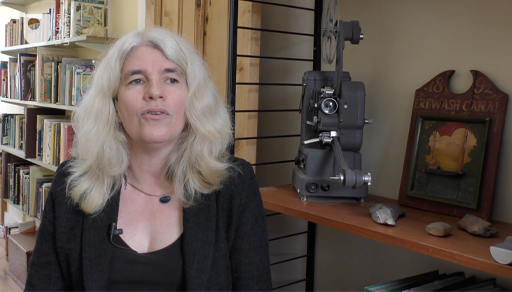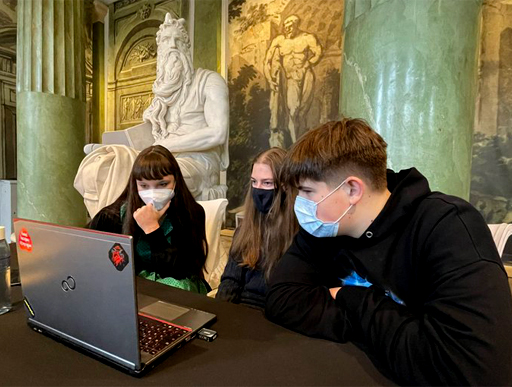5 Editing: bringing it all together
Allow as much time for editing as possible. Editing often takes a lot longer than expected – in fact, it tends to take a lot longer than the process of filming the footage. While there is no expectation for the docutubes to be any longer than 3 minutes, professionals would spend days editing a three-minute film. This is why some young people who participate in educational film projects can be disappointed by what they can achieve in the relatively limited time available. However, you should again remind them that the purpose of their docutube is not to make a technically perfect movie, but to communicate ideas about religious peace and toleration in the past and present. So, what is most important in the process of editing their docutubes is to focus on the argument or story that they aim to convey.
Activity 3
Watch Video 3 again, but this time focus on the advice that professional filmmaker Gail Block gives on editing short films. (Note that this is also a film you can show to your group before they start to film and edit their docutubes.)
This is only a taster, since the editor’s art is complex and deserves an entire course of its own. Make sure you take the advice of anyone you know who has these skills and is willing to support the editing session.

Transcript: Video 3 (repeated)
[MUSIC PLAYING]
[MUSIC PLAYING]
Discussion
In this film, Gail Block talks about some of the main principles of editing short films, including the following:
- Give the editing phase as much time as possible as it often takes more time than expected.
- Encourage young people to focus on the story they intend to tell when editing their film and concentrate first on the (1) the story as a soundtrack and then on the (2) visuals. Finally, if there is more time, they can also add (3) captions and (4) music.

Just as there are different roles team members can take on in the filming process, each group member can also take on a different role in the process of editing the film. For instance, in a small group, one person might work with the software (the ‘editor’), another might select the shots (the ‘producer’) and a third member of the group might further develop the script to strengthen the narrative in light of the available footage. Another way of sharing the work in the editing process is to split the film into different sections, with each group member focusing on editing a different section of the film.
